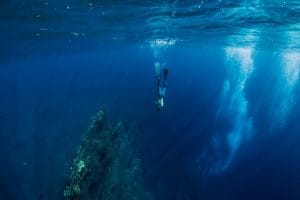
Why Scuba Divers Should Try Freediving: A Personal Perspective from an Scuba diving and Freediving Instructor
Hey everyone, I’m Matt, co-director of OceanSense Freediving here on the Sunny Coast. Over the
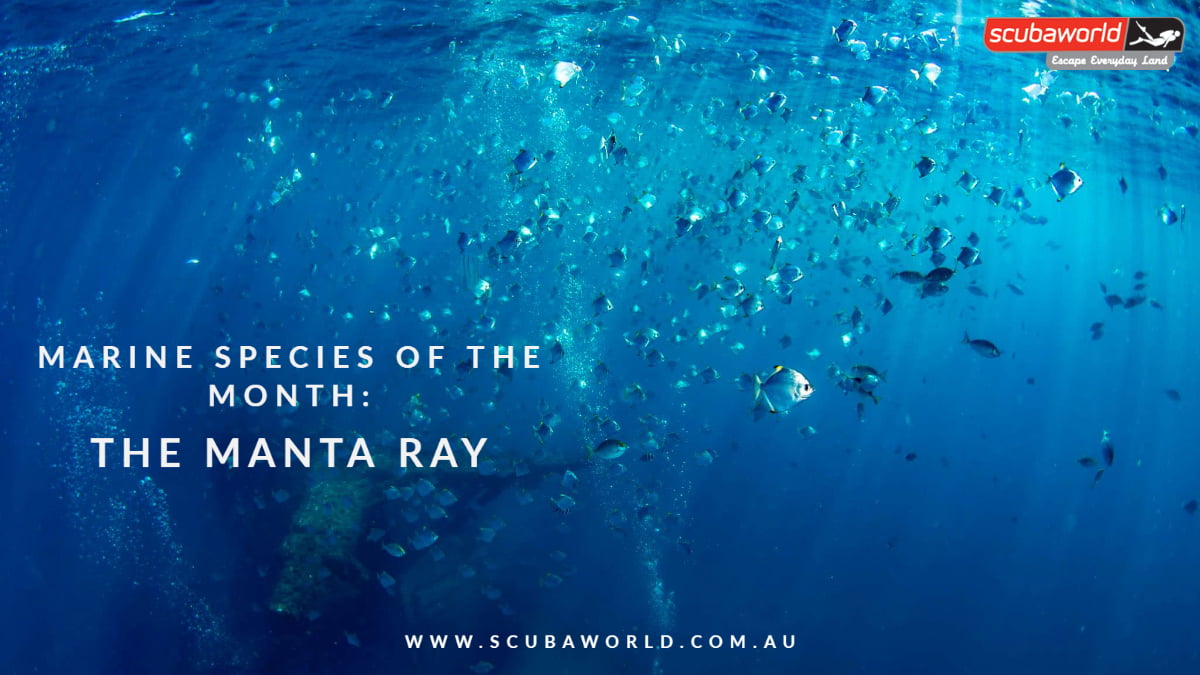
Manta rays are the world’s largest rays. There are currently two recognised species, the reef manta ray (Manta alfredi) and the giant oceanic manta ray (Manta birostris).
“Manta” translates to blanket or cloak in Spanish, which very well describes the look of the animals’ large, flat, diamond-shaped bodies, which are characterized by triangular pectoral fins. Manta rays also have two horn-shaped fins protruding from the front of their heads, which has also given them the nickname “devil fish.”
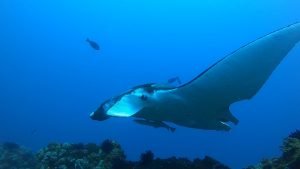 #931 “Pez” @ Barwon Banks
#931 “Pez” @ Barwon Banks
These species have been found worldwide but here in Australian waters; manta rays are found from Shark Bay in Western Australia across the Northern Territory and Queensland to central NSW in eastern Australia
Glorious gentle giants of the sea these animals are completely harmless, and they attract a lot of interest from everyone, so let us find out why.
Where to find a Manta ray
In the sea … Obviously. Manta rays live alone or in small groups, typically congregating to feed. Manta rays make regular visits to cleaning stations—spots on a coral reef where sea animals go to be cleaned by smaller creatures like cleaner wrasse that remove parasites and dead skin. Research shows that many individual manta rays return to the same stations over and over. These stations are then called aggregation sites.
There are a few known main aggregation sites for the reef manta ray including: Coral Bay and Ningaloo Reef in Western Australia; Lady Elliot Island in the southern Great Barrier Reef, Osprey Reef in the Coral Sea, North Stradbroke Island in southern Queensland and Julian Rocks in New South Wales.
Are they really giants?
While the smaller reef manta has an impressive wingspan of about 3.5 meters wide on average, the giant oceanic manta ray can have a wingspan of up to 9 meters. That is about two times as tall as a Giraffe!
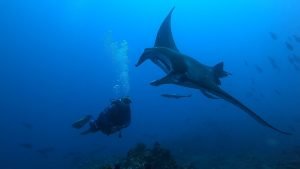 #850 “Flic” @ Barwon Banks
#850 “Flic” @ Barwon Banks
How smart is a Manta ray?
Manta rays have the largest brain-to-size ratio of any cold-blooded fish species. Studies have shown that manta rays may recognise themselves in the mirror, an ability indicative of high cognitive function, also shown by dolphins, primates, and elephants. Studies have also shown that manta rays are able to create mental maps of their environment, through smell and visual cues, indicating highly developed long-term memory.
So, who is smarter …? The Manta Ray or the Octopus?
Why is something so wonderful so threatened?
Their largest threat is over fishing. Targeted by fisheries in various parts of the world it has resulted in being listed as Vulnerable to Extinction in the IUCN Red List of Threatened Species.
Manta rays are fished for their meat, as well as the increasingly desire for their their gill plates which can be worth $30 Million dollars. The demand for them in Chinese medicine increase, as they are said to help with everything from increasing blood circulation to curing chickenpox, despite a lack of scientific evidence.
Can’t they just keep reproducing to stay out of endangerment?
Because they are long-living (50-year life span) and slow to reproduce, localised populations have a difficult time bouncing back when fished.
Female manta rays hit sexual maturity at around 8-10 years old and tend to give birth to 1 occasionally 2 pups once every couple of years. Pregnancy lasts about 12 to 13 months and manta rays give birth to live pups. Babies look like smaller version of adult manta rays when born and can immediately survive without parental care.
How to Help
Project Manta is a research collaboration focusing on the population ecology and biology of manta rays within Australian waters. This project aims to investigate connectivity and movement between populations of manta rays within Australia, generate accurate estimates of population size, understand key biological and environmental drivers of population dynamics, and use this information to provide management recommendations for manta ray populations in the region.
Project Manta engages scientists, industry partners and the general public in a comprehensive study of manta rays that will provide baseline knowledge for the long-term sustainability of the species.
Each manta ray has unique spotting patterns on their underside that we use to identify them. Photographs of manta rays including these patterns provide an important record of when and where individual manta rays were sighted. If you photograph a manta ray you help discover more about their movement patterns and behaviour. If you photograph a new individual, you get to name it! Which I have personally named one too.
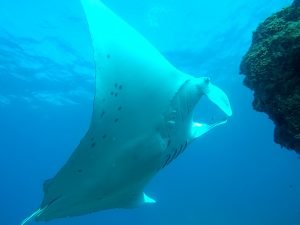 #1195 “Moni” – Photographed and Named by Leila Barnsley
#1195 “Moni” – Photographed and Named by Leila Barnsley
Manta rays are curious animals and will often approach divers underwater. However, they tend to swim away if divers chase them or physically contact them. For the best opportunities to observe and photograph manta rays, divers should maintain good buoyancy and control, find a good position to stay in (such as kneeling on sand but not on living substrate such as coral) and wait for the manta rays to approach them.
Join me at one of the very few know aggregation sites of Manta Rays at North Stradbroke Island this November and let us see how many we can identify while having some fun.
Click HERE for more information about Project Manta
Click HERE to see North Stradbroke Island trip information
Hope to see you underwater soon.
Leila Barnsley ~ Scuba World Instructor
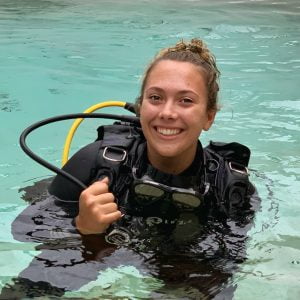

Hey everyone, I’m Matt, co-director of OceanSense Freediving here on the Sunny Coast. Over the
Join us Thursday 30th Jan at 5:30pm to hear David Mullins talk about nudibranch defences
Dear members, I would like to take this opportunity to inform you about a few